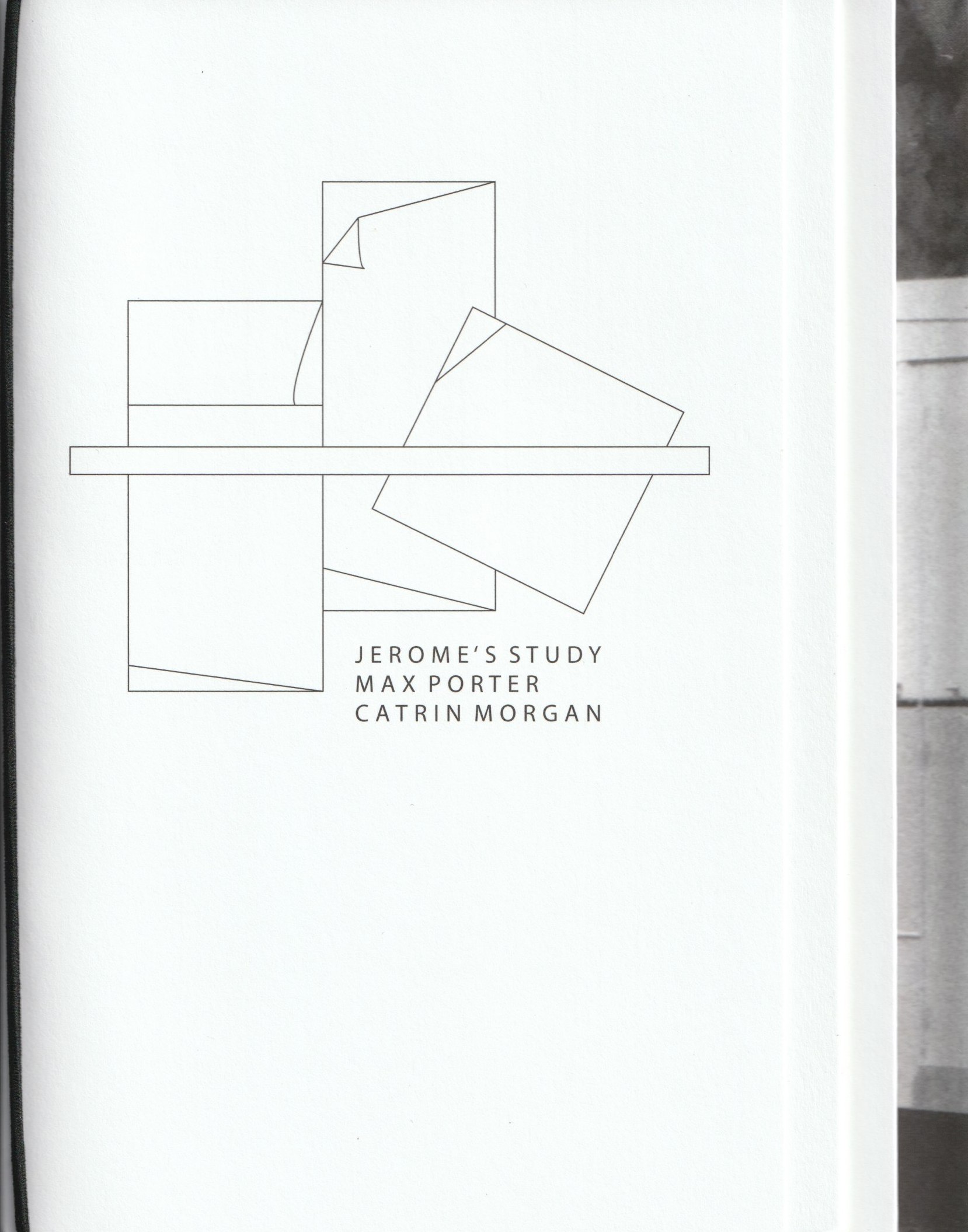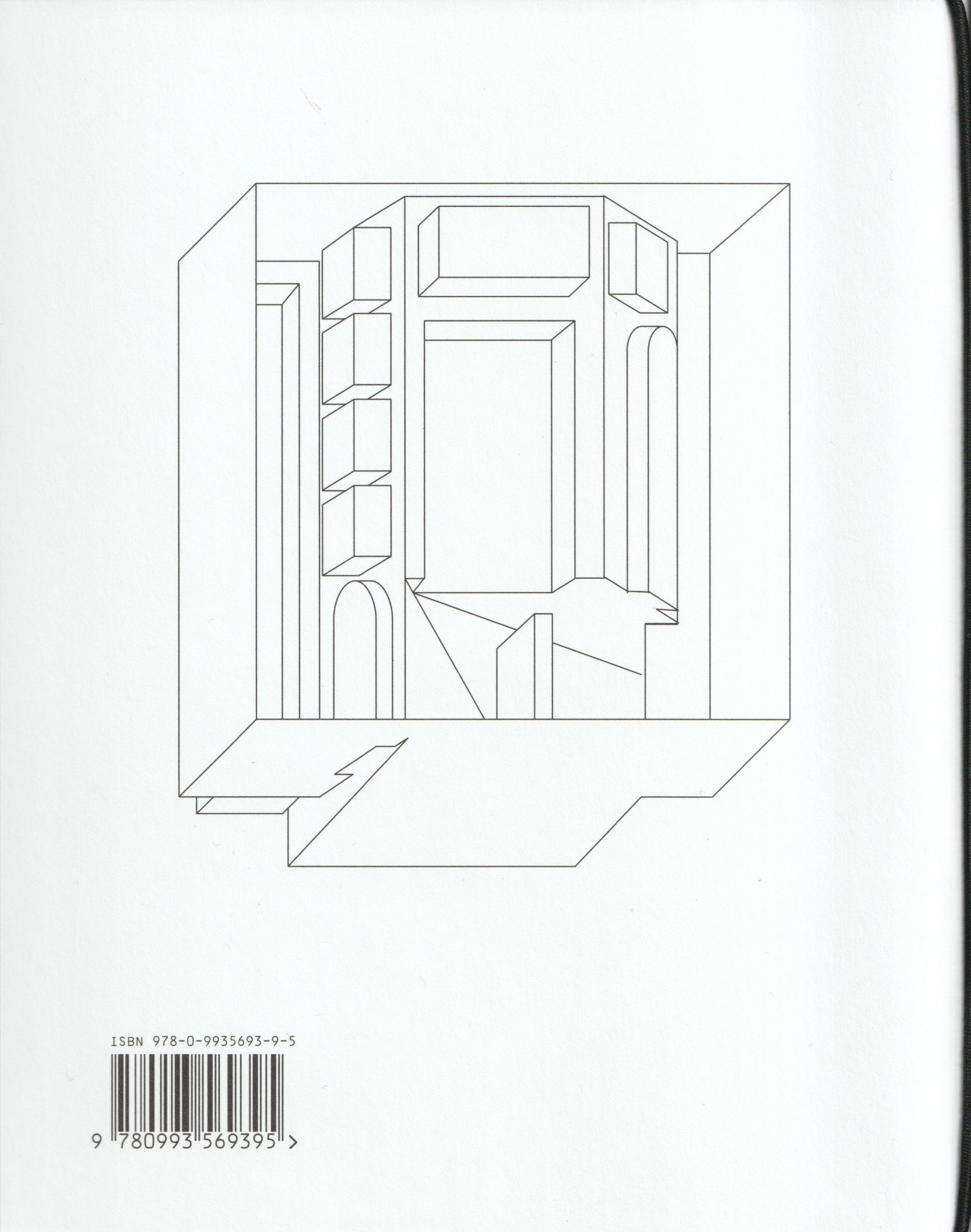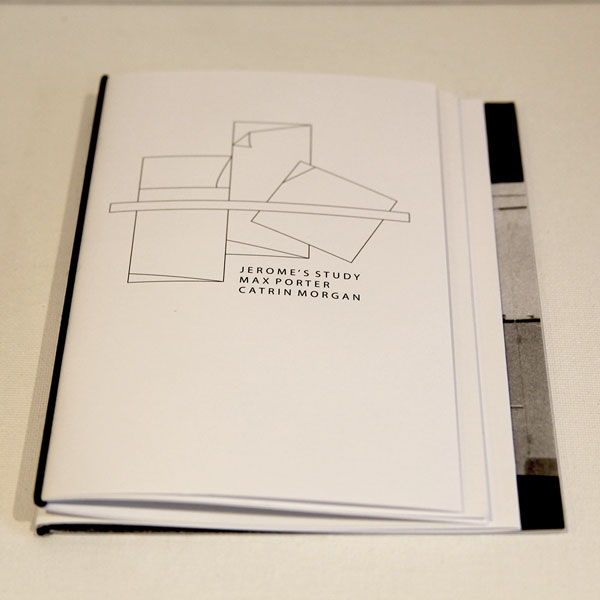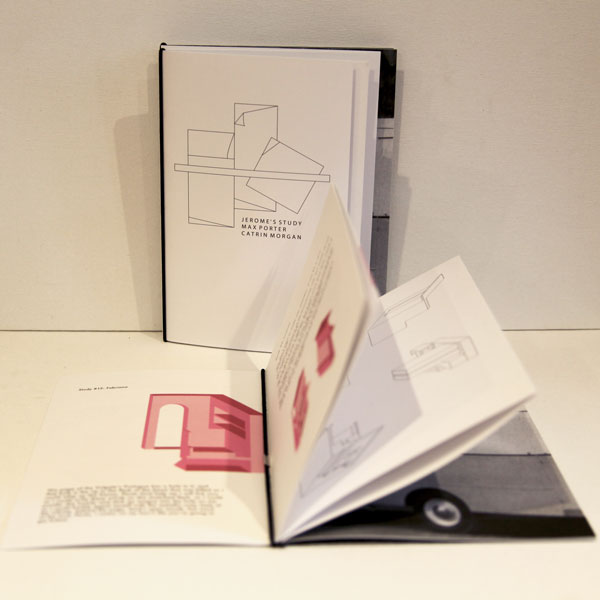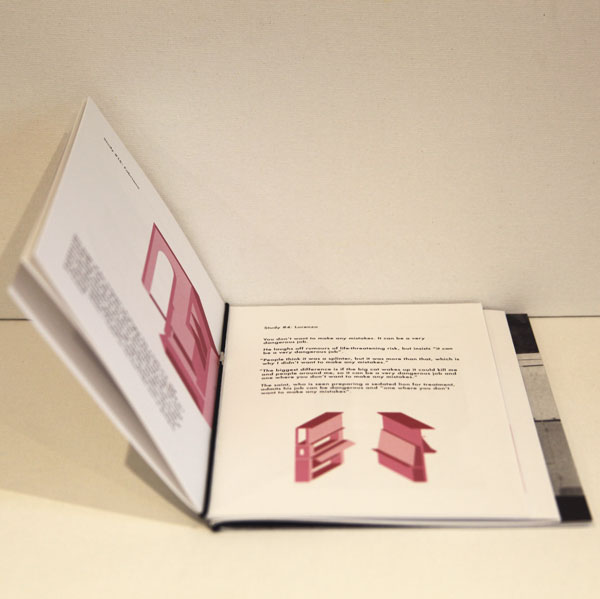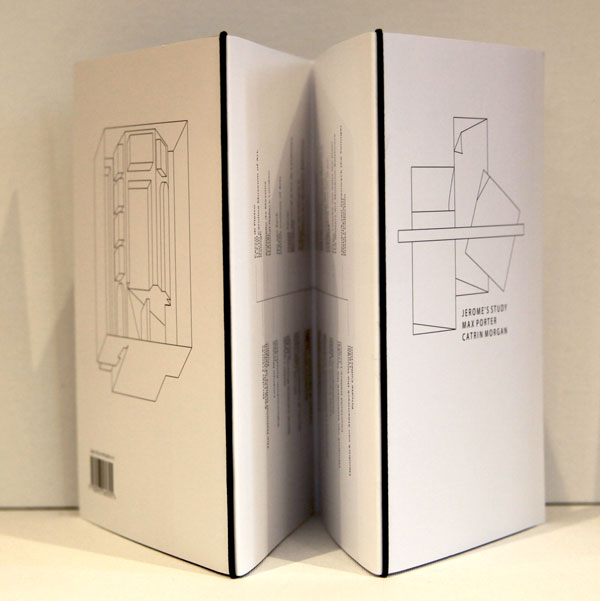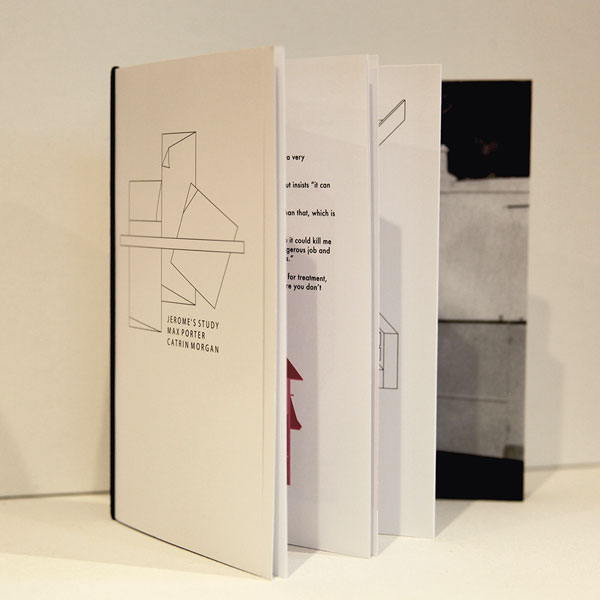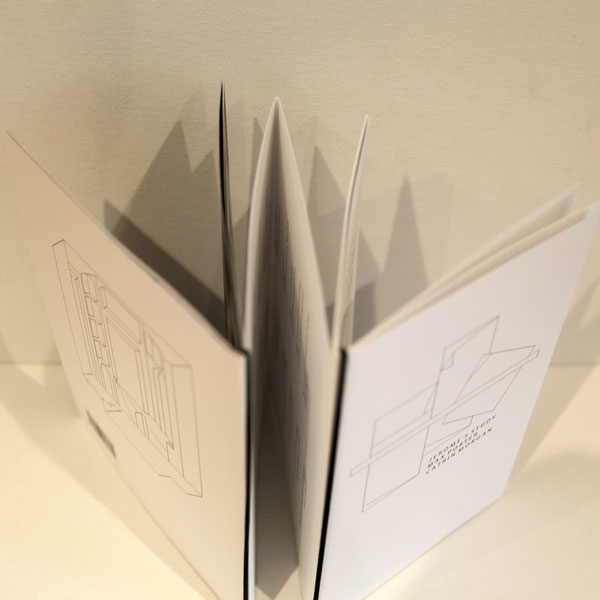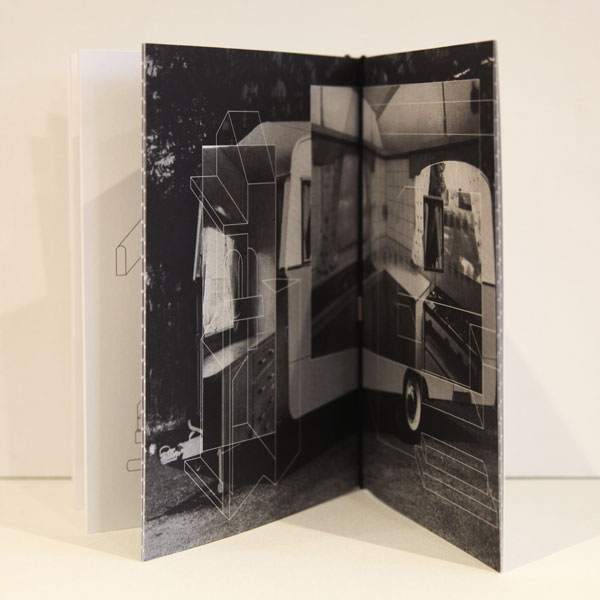Jerome’s Study
£10.00
Catrin Morgan, Max Porter
In stock
Test Centre is excited to announce the publication of Jerome’s Study, a collaboration between prize-winning author Max Porter and artist Catrin Morgan. The third publication in our ekphrastic series, the book explores the ways in which literary and visual art forms respond to and translate other works of art.
The collaboration evolved from Catrin’s series of isomorphic translations of Renaissance paintings of Saint Jerome, most often depicted at work in his study. Catrin invited Max to respond to her images, and his texts became the flesh to be re-inserted into the empty architectural environments of her art-historical spaces.
According to Max, ‘The idea was that they would be pan-historical, somewhere between polluted wall texts, hoax footnotes and the real (bodily) contemplations of a troubled theologian in a small space, battling myth and symbols and the small array of objects – real and imaginary – before and behind him. Cat asked me to spill over her clean lines, so the work is sometimes vulgar, sometimes kitsch (he is a saint, after all), but more often than not tragic, or pitiful. Men alone in boxes telling stories usually are.’
Jerome’s Study explores what happens when we observe and study pieces of art; how we depict and translate our impression of something, and the stories and preoccupations that emerge when we spend time with another work of art.
The book itself, beautifully designed and hand-assembled by Catrin, opens up and expands the possibilities inherent in the original collaboration, so that the radically engineered book itself is as important as the images and the text. As Max says, ‘This is what makes Jerome tick.
Description
Jerome’s Study is a collaboration between prize-winning author Max Porter and artist Catrin Morgan. The third publication in our ekphrastic series, the book explores the ways in which literary and visual art forms respond to and translate other works of art.
The collaboration evolved from Catrin’s series of isomorphic translations of Renaissance paintings of Saint Jerome, most often depicted at work in his study. Catrin invited Max to respond to her images, and his texts became the flesh to be re-inserted into the empty architectural environments of her art-historical spaces.
According to Max, ‘The idea was that they would be pan-historical, somewhere between polluted wall texts, hoax footnotes and the real (bodily) contemplations of a troubled theologian in a small space, battling myth and symbols and the small array of objects – real and imaginary – before and behind him. Cat asked me to spill over her clean lines, so the work is sometimes vulgar, sometimes kitsch (he is a saint, after all), but more often than not tragic, or pitiful. Men alone in boxes telling stories usually are.’
Jerome’s Study explores what happens when we observe and study pieces of art; how we depict and translate our impression of something, and the stories and preoccupations that emerge when we spend time with another work of art.
The book itself, beautifully designed and hand-assembled by Catrin, opens up and expands the possibilities inherent in the original collaboration, so that the radically engineered book itself is as important as the images and the text. As Max says, ‘This is what makes Jerome tick.

